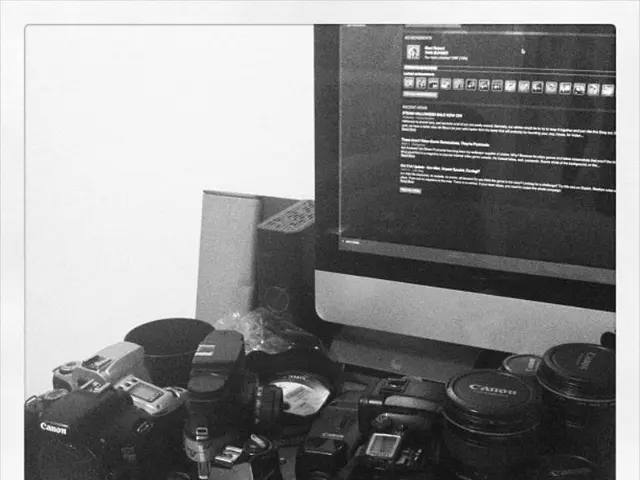Investigative Tactics for Optimizing User Experience on Mobile Devices
In today's digital age, remote user research has become a common practice in the realm of mobile app development. This innovative approach offers unique opportunities for mobile app user research, helping designers gain valuable insights into user behavior and preferences.
Remote Usability Testing Tools like Lookback, Maze, or UserTesting enable moderated or unmoderated usability sessions where users interact with mobile prototypes or apps remotely. These sessions provide qualitative insights into usability issues and user behavior in real contexts.
User Interviews Conducted remotely via video calls, user interviews gather rich qualitative data on user motivations, goals, and pain points, helping to build user personas and understand deeper user needs.
Surveys Tools such as Typeform or SurveyMonkey facilitate wide-reaching quantitative research to validate findings across larger user samples and collect data on user satisfaction, preferences, and demographics.
Behavioral Analytics and Heatmaps Platforms like Mixpanel and Hotjar provide quantitative data by tracking real-time user interactions, engagement patterns, heatmaps, and session recordings on mobile apps. This helps identify friction points and popular features quantitatively.
Information Architecture Methods Card sorting and tree testing using Optimal Workshop or UXtweak help refine navigation and content structure tailored for mobile users by uncovering natural user categorizations and testing navigability.
By combining these methods, a richer understanding of users can be achieved. Start with qualitative methods to explore user context, motivations, and challenges. Use usability testing for early validation of designs or prototypes. Complement with quantitative data from surveys and analytics to confirm trends, measure behaviors at scale, and benchmark performance. Incorporate information architecture testing to optimize navigation and content hierarchy specific to mobile device contexts.
Mobile Eye-Tracking Software This technology detects the user's eye movements and gaze patterns as they interact with the app, allowing designers to determine what features attract the user's attention.
Mobile Survey Tools These gather feedback from users about their experience with the mobile app, helping prioritize future development efforts.
A/B Testing Comparing two versions of a mobile app to see which one performs better in terms of user engagement and conversion rates is crucial for improving mobile UX. Tools like Optimizely or Google Optimize can be used for this purpose.
Mobile Analytics Software This software monitors user behavior within the mobile app, providing data on the number of times users use a feature, the time spent on each screen, and the rate at which users perform particular tasks.
Mobile Heat Mapping Software This software tracks the areas of the mobile screen that users interact with the most, which can help optimize the placement of buttons, links, and other interactive elements.
Surveys and Questionnaires These are great ways to gather feedback from the target audience about mobile app user preferences, expectations, and pain points.
Remote Research and the Business Case for Mobile Apps While remote research should not be the sole method in UX research, it is more effective when combined with other methods such as in-person interviews or usability testing. There is a strong business case for remote research for mobile apps to help designers build better mobile user experiences.
Lorraine Patterson's article on Mobile User Research Methods provides valuable insights for designers, and the Interaction Design Foundation has a hero image available under CC BY-SA 4.0 for related content. A round-up of mobile testing tools, including open-source options, is also available for those looking to delve deeper into mobile UX research.
- User research in mobile app development has expanded to include remote sessions, offering opportunities to study user behavior and preferences using tools like Lookback, Maze, or UserTesting.
- Surveys, such as those facilitated by Typeform or SurveyMonkey, provide valuable quantitative data for validating user satisfaction, preferences, and demographics.
- A/B testing, using tools like Optimizely or Google Optimize, allows designers to compare two versions of a mobile app to determine which performs better in terms of engagement and conversion rates.
- Mobile survey tools gather user feedback on their experience with the app, helping prioritize future development efforts.
- In the realm of mobile app design, information architecture methods like card sorting and tree testing, along with technologies like mobile eye-tracking software and heat mapping software, help optimize navigation and user experience tailored to mobile devices.




